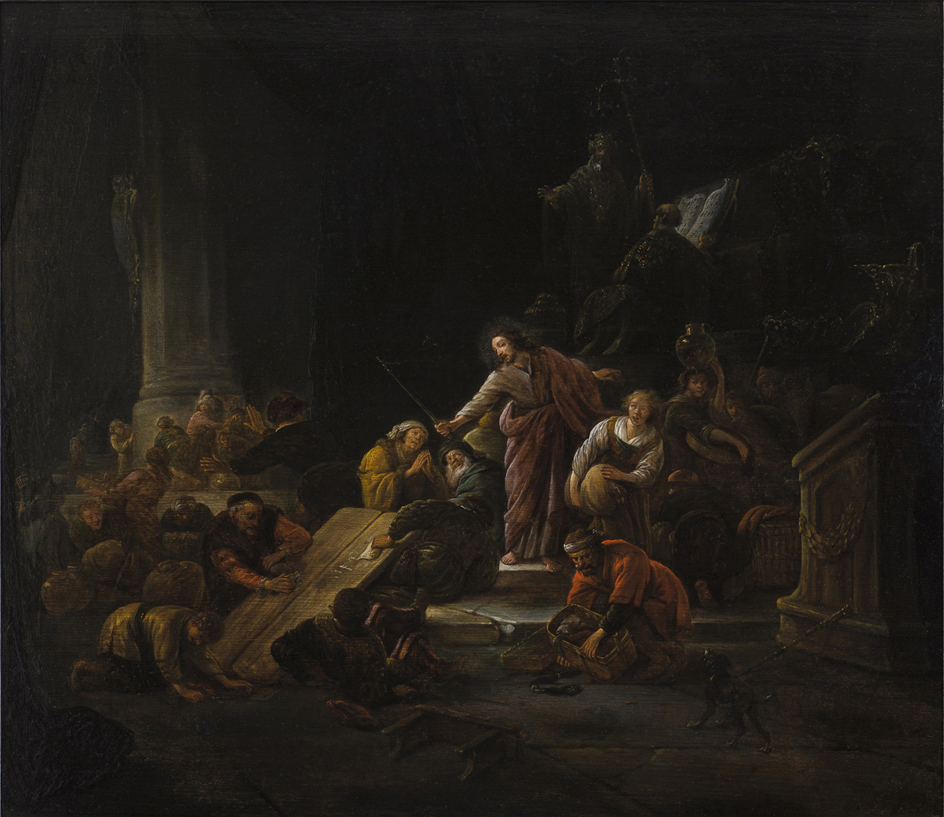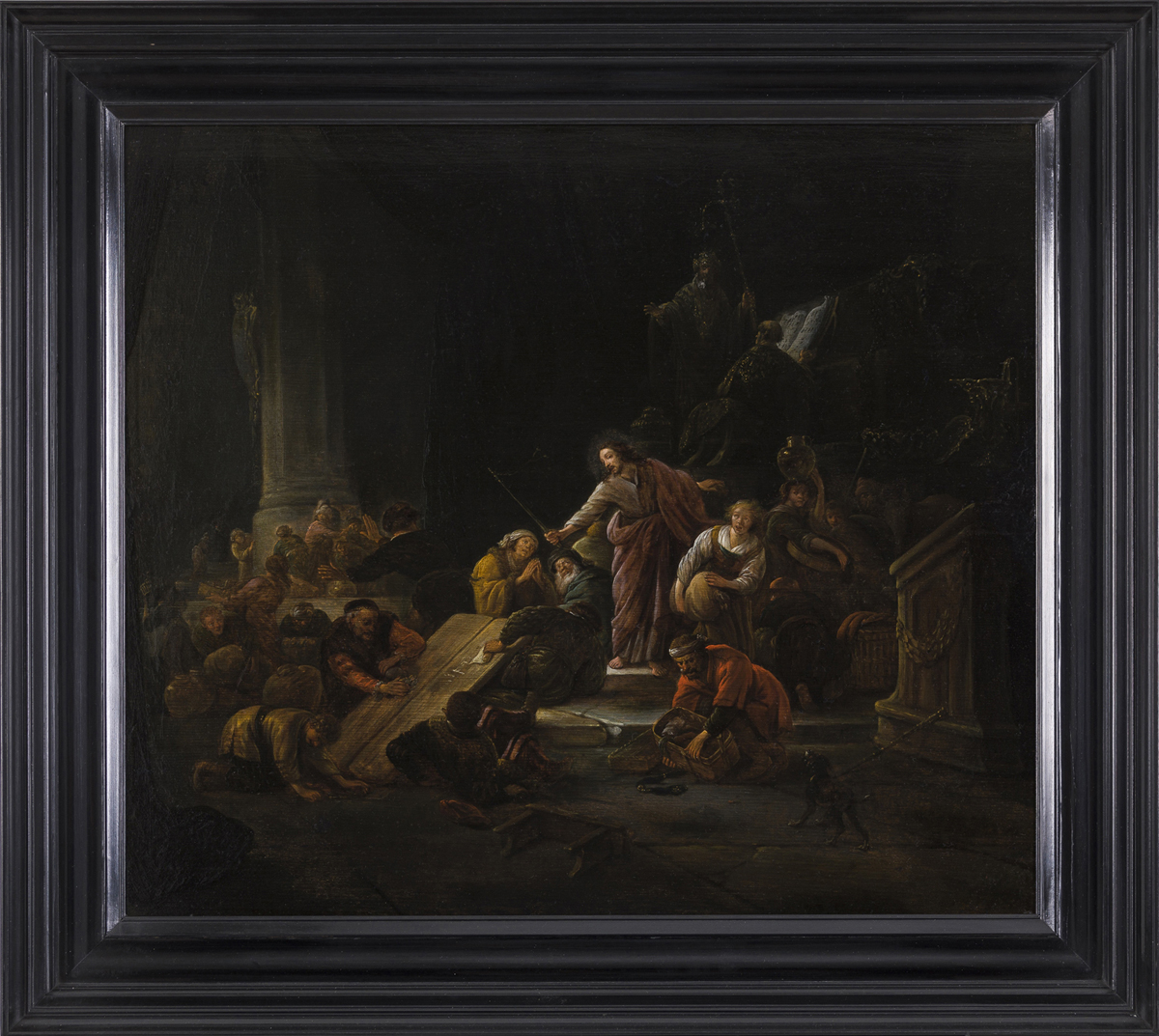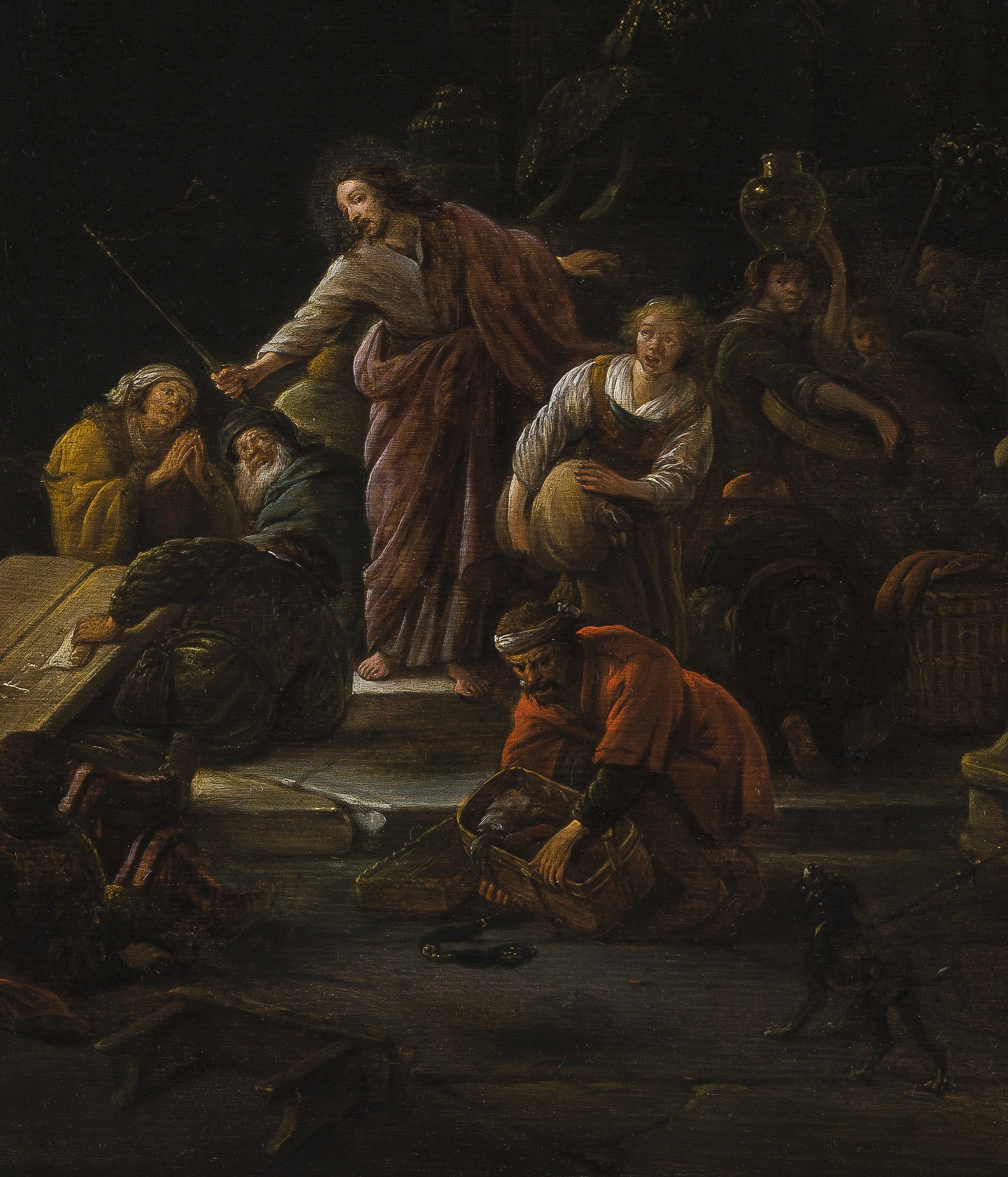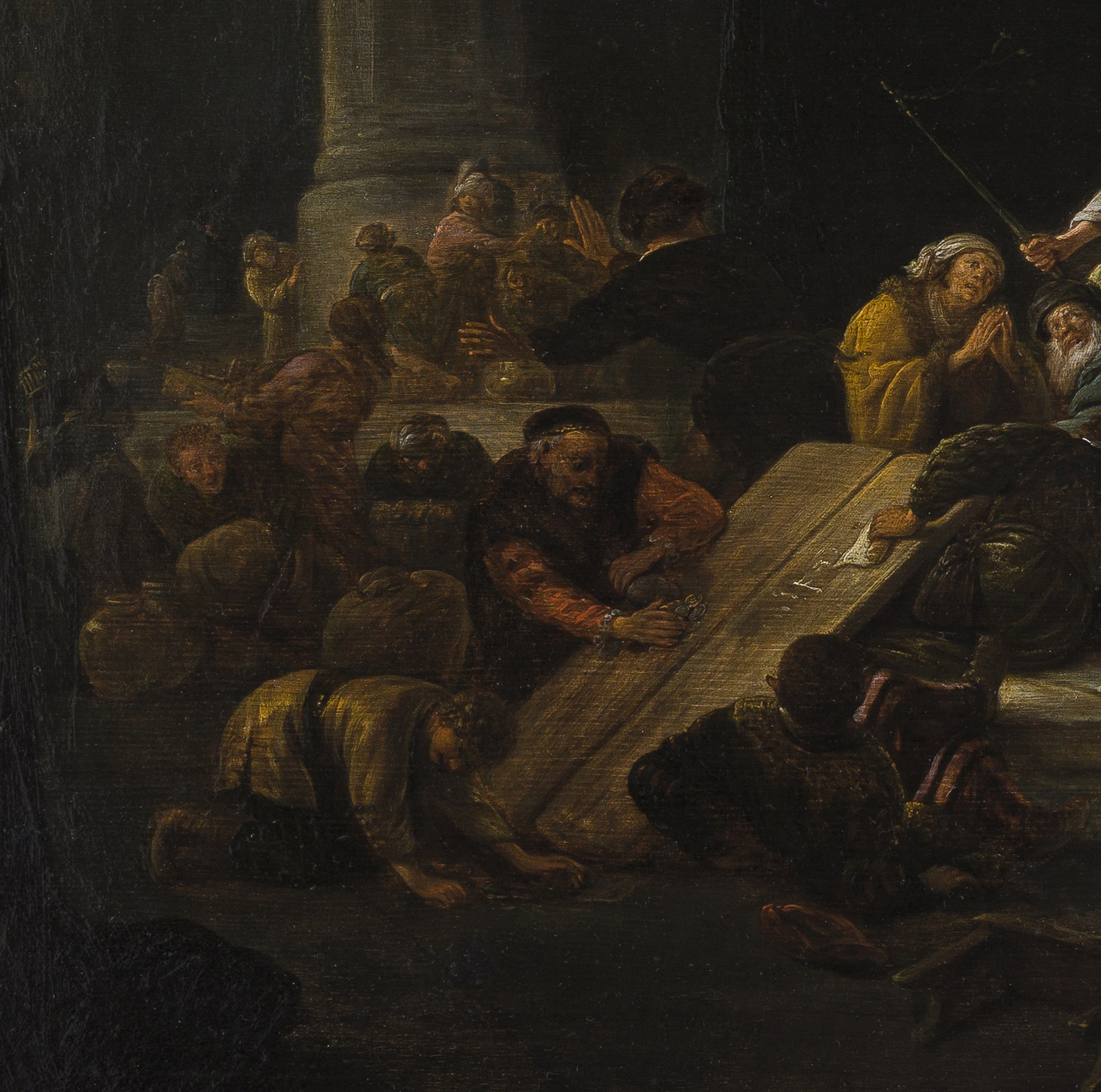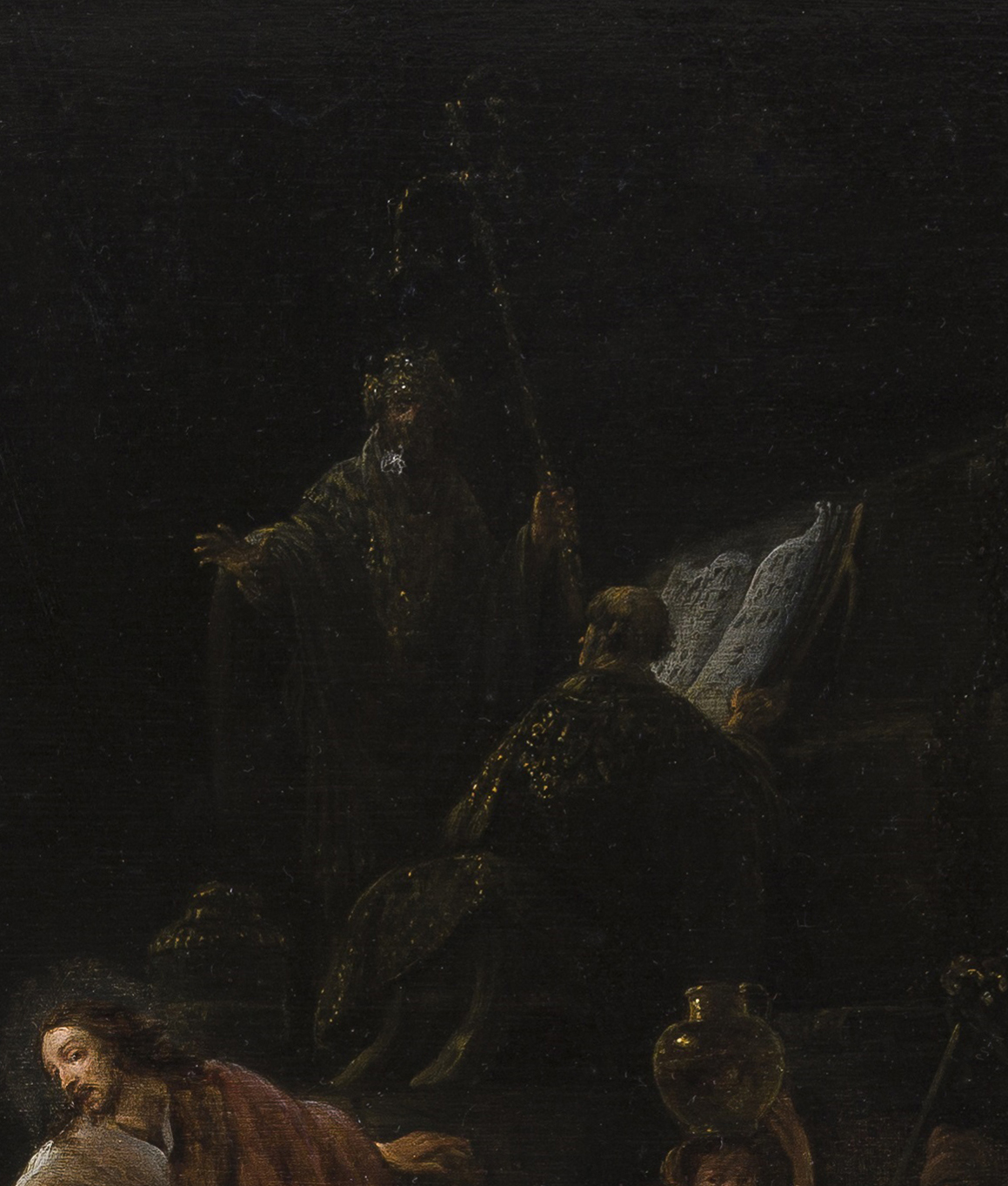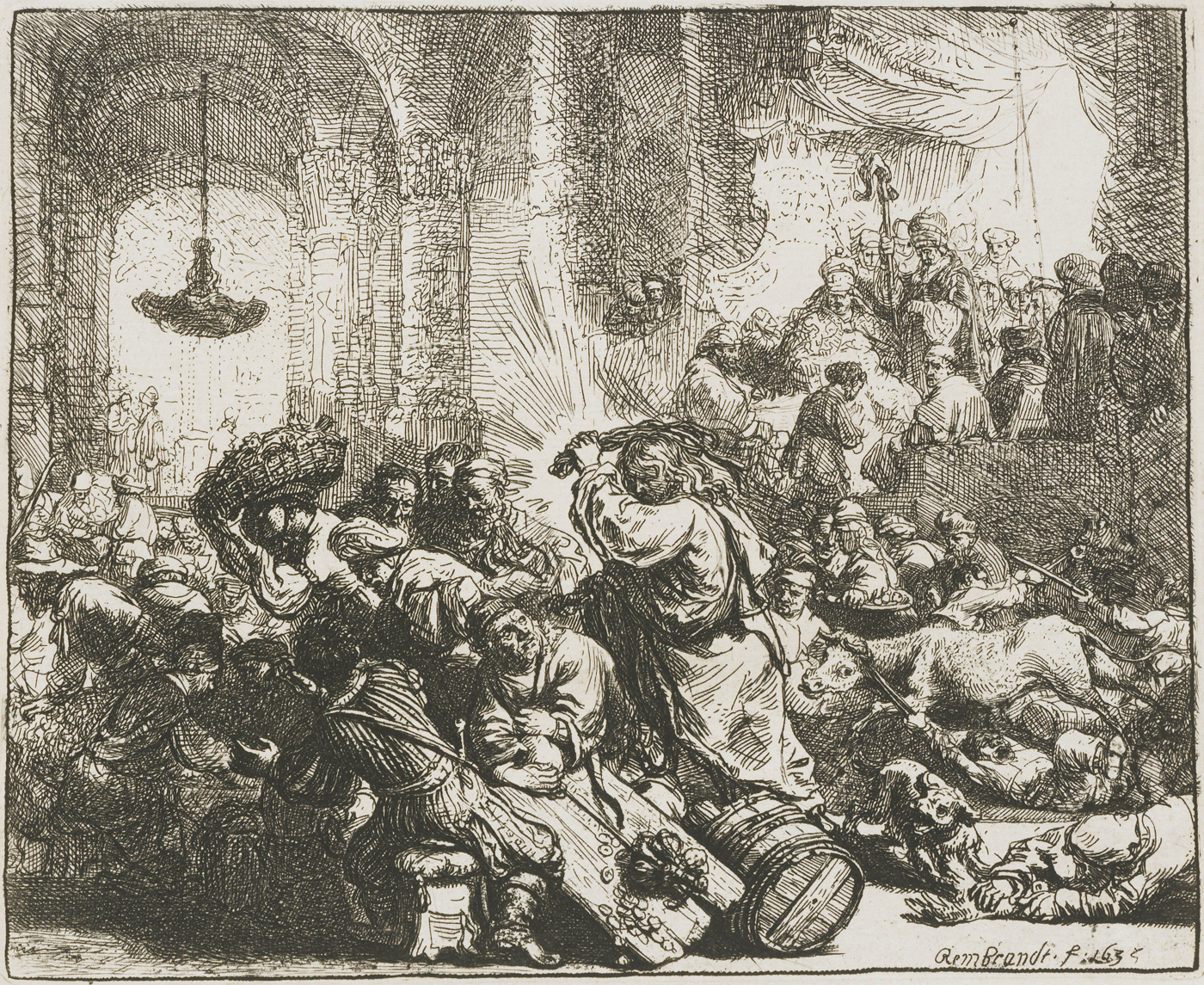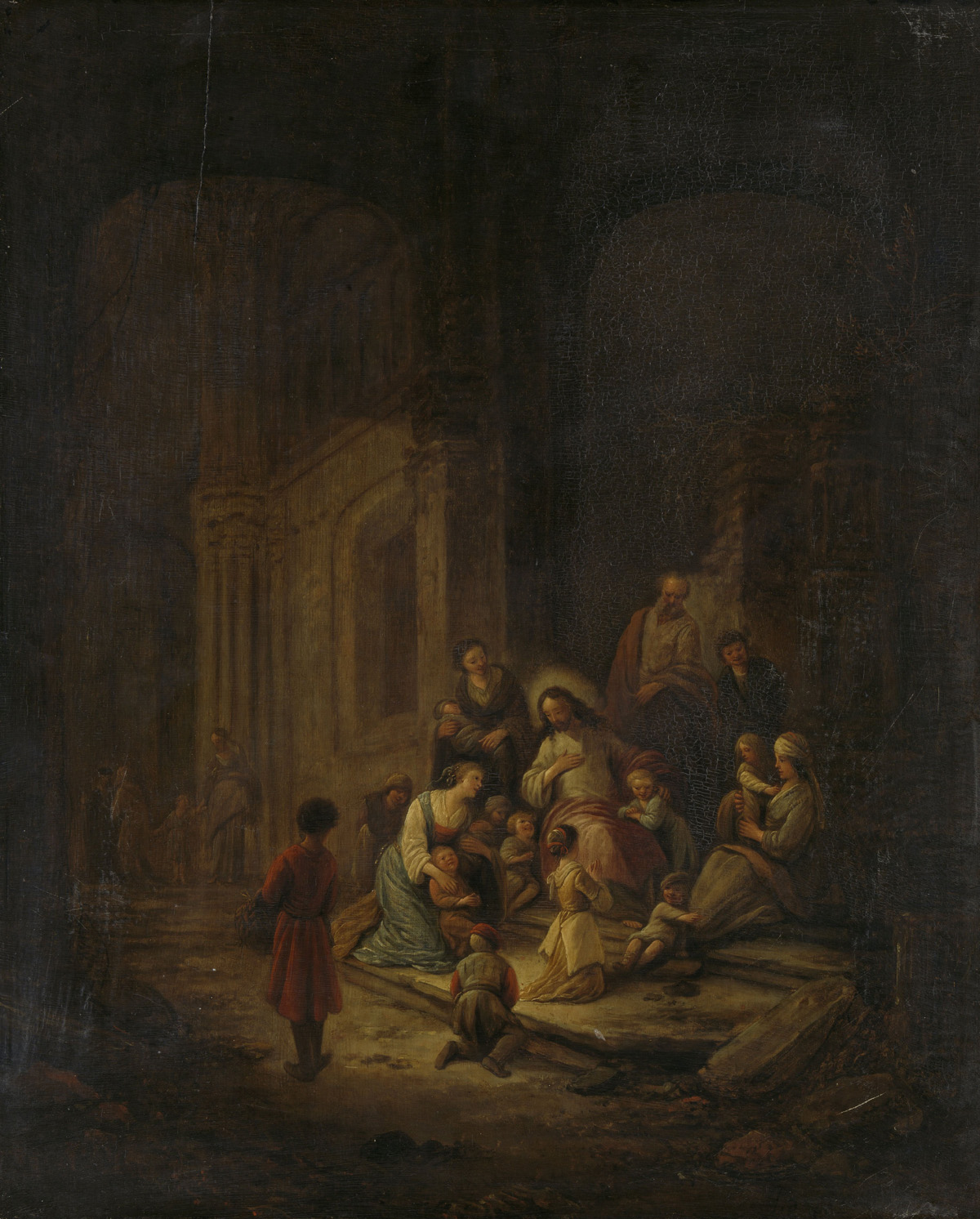JACOB DE WET I (Haarlem c. 1610 – c. 1675 Haarlem)
Jacob de Wet I (Haarlem c. 1610 – c. 1675 Haarlem)
Christ Expelling the Money Lenders from the Temple
Oil on panel, 51.9 x 59.5 cm (20.4 x 23.4 inch); presented in a modern ebonised frame of 17th-century model
Signed ‘J. D Wet’ (lower centre)
Provenance
~ Anonymous sale, Glerum, The Hague, 10 May 1993, lot 70, repr.
~ Private collection, The Netherlands
***
Jacob de Wet was born around 1610 in Haarlem as the son of the Catholic Bailiff Willem Jansz de Wet and Marritge Jacobsdr.1 His earliest known work dates from 1632, the year in which he joined the Haarlem guild of St Luke. De Wet may have been trained by his grandfather, the painter Jan de Wet, whose oeuvre remains nearly completely unknown. De Wet’s paintings show a strong a awareness of the paintings of Pieter Lastman and the early Rembrandt, and it cannot be excluded that he studied with the latter.
De Wet led a successful studio in Haarlem and is known to have trained some 37 pupils. He specialised in paintings with biblical subjects and nearly all his surviving works are taken from subjects from the Old and New Testament. Among his pupils were Paulus Potter, Job Berckheyde, Jan Vermeer of Haarlem, and his own son Jacob de Wet II. De Wet was known as a connoisseur of painting, and in 1671 he was chosen as one of fifteen ‘best connoisseurs’ to judge the paintings by Italian masters in the collection of Gerrit Uylenburgh. The only seventeenth-century portrait of De Wet was sold by ourselves to the Noord-Hollands Archief in 2015.
The subject of Christ expelling the merchants and money changers from the Temple, also known as the cleansing of the Temple, is recounted in all four canonical gospels of the New Testament. Christ and his disciples travelled to Jerusalem for Passover, where Christ found the Temple invaded by commercial activities, accusing the merchants and lenders of turning the holy place into a “den of thieves” and “a house of trade”. The subject was famously treated by Rembrandt (1606–1669) in an etching of 1635 (fig.).2 In terms of composition, De Wet’s painting is indebted to Rembrandt’s etching, for instance in the general mise-en-scène, the architectural columns in the left background and the staff-bearing high priest in the right background.
The present work can be compared to De Wet’s Christ Blessing the Children in the Rijksmuseum in Amsterdam (fig.).3
1. For the artist, see: A. Jager, ‘The workshop of Jacob de Wet (1610-1675) and his mass production of history painting’, Oud Holland, 131, 2018, pp. 67-103.
2. Etching, 136 x 168 mm, Bartsch 69; an impression is preserved in the Rijksprentenkabinet, inv. no. RP-P-0B-134.
3. Panel, 55 x 45 cm, inv. no. SK-A-1350; P.J.J. van Thiel, All the paintings in the Rijksmuseum, Amsterdam 1976, p. 603, repr. This painting was formerly in the collection of Dr Abraham Bredius.
